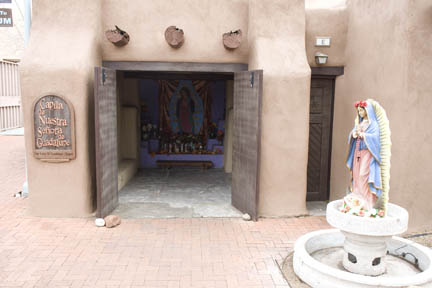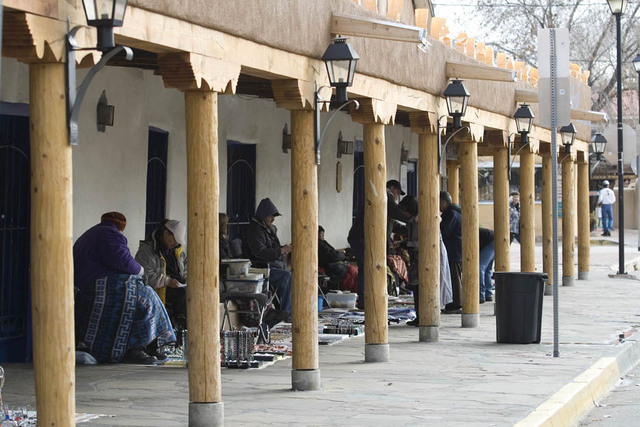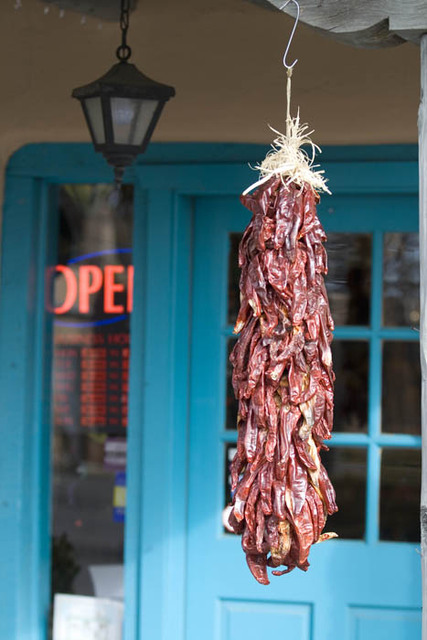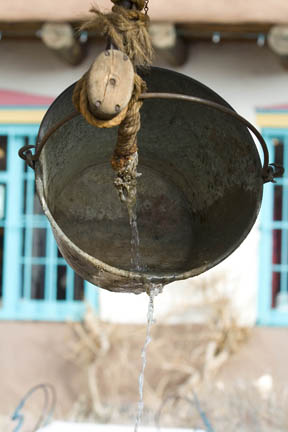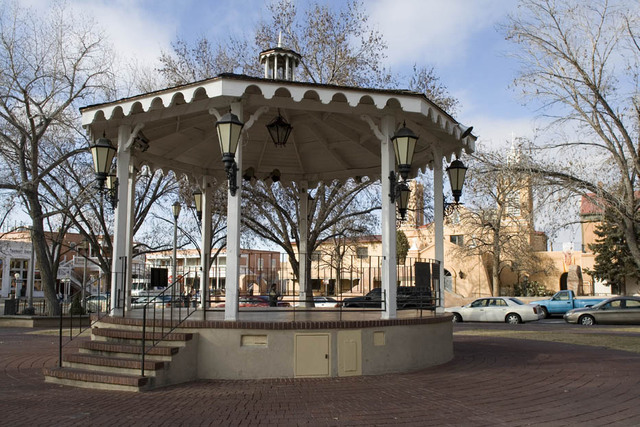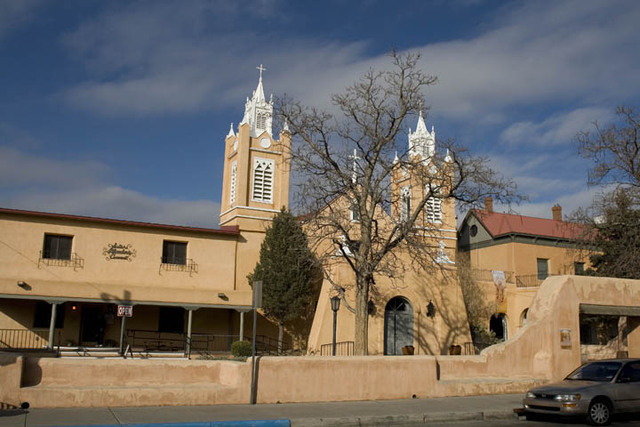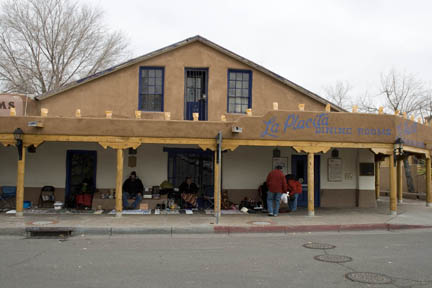There seems little possibility that Valle de Atrisco will rise from the ashes of January’s catastrophic election day. Residents of the unincorporated portion of Bernalillo County known as the South Valley were given the opportunity to vote on whether their largely rural community should form a new town known as Valle de Atrisco. The proposal was soundly defeated by 93 percent. Like many Albuquerque residents, I watched the run-up to the vote with interest. Truth be told, I was (and am) somewhat ambivalent about the result. The debate on the fiscal feasibility of the proposed town was confusing, with both those for and against trumpeting claims that seemed dubious. And, frankly, the South Valley has always been a bit of a mystery to me, as it no doubt is to the many Albuquerqueans who live our lives well within the limits of the city proper. However, I do understand the desire for self-determination on the part of residents, the need for a community to take charge of its own fate. No matter how they voted, many in the South Valley would like the area to retain its semi-rural character and unique cultural identity, and there is every reason to fear that they will not be able to do so in the near future. Albuquerque continues to grow into the 21 st century, and the need for housing—and cheap, undeveloped land on which to build—will grow with it. As the endless subdivision tracts of the Westside and Rio Rancho show, there is already a seemingly insatiable hunger for land to fill up with street after street of cookie-cutter houses and acres upon acres of Wal-Marts, Applebee’s and assorted genericana. The South Valley, with its swathes of inexpensive agricultural land along the Bosque, inarguably presents a mouthwatering opportunity for developers. Look no further than the subdivision that recently sprouted along Second Street at Rio Bravo, or the Wal-Mart at Rio Bravo and Coors, to realize the whittling away has already begun. Although the proposed city of Valle de Atrisco is little more than a fading dream at this point, the issues that instigated the referendum will only become more pertinent as the demand for housing in the Albuquerque vicinity grows. It is a story that has played out many times over the past half-century. Residents who think things in the South Valley will remain as they are into the foreseeable future need look no further than Albuquerque’s Old Town—a community that was unable to successfully retain its identity in the face of an Albuquerque population boom. *** Here’s a bit of trivia you may not have known: Until 1949, Old Town wasn’t a part of the city of Albuquerque. Despite what you may have read on historic plaques or in certain history books, the city of Albuquerque was a completely separate community from Old Town Alburquerque (please note the presence of two “r”s) until the middle of the 20 th century. This, of course, flies in the face of what many Albuquerque residents “know.” An explanation is in order. La Villa de San Francisco Xavier (later San Felipe de Neri) de Alburquerque was founded in 1706 as a colony of the Spanish crown in the area known today as Old Town. For 243 years, it remained an independent community. In 1881, 35 years after New Mexico became a territory of the United States, the AT&SF Railroad Company made the decision to build a depot two miles to the east of Villa de Alburquerque. Immediately upon the depot’s completion, a new and entirely separate town began rising up around it. Despite being located well outside the original Villa, this town was named, confusingly, New Albuquerque; the loss of the first “r” a side effect of Anglo-American tongues fumbling over the original Spanish pronunciation. For 60 years, two towns called “Alburquerque,” or something like it, coexisted in the Middle Rio Grande Valley. One was “New”—therefore the other became known as Old Alburquerque or, simply, Old Town. At this point, many of the popular books that deal with Albuquerque history (including, incidentally, mine) are content to leave Old Alburquerque and focus on the rapid rise of New Albuquerque, with its smoke and train whistles and booming industry heralding a new and distinctly “American” era. If Old Alburquerque warrants a mention at all, it is often in dismissive terms, as in Bette Casteel’s autobiography Old Town Albuquerque in the 1940s and a Little Beyond , wherein she describes the plaza as having “slumbered for years while adobes crumbled into dust and mud.” The prevailing view seems to be that Old Town was unimportant at this time, a dormant community, a place where life once happened but no longer did.But these passages belie the truth of the matter: Old Town, though no longer the center of “Albuquerque’s” growth, remained a vital community in its own right, one with a strong separate identity from the burgeoning municipality to the east that shared a mangled version of its name. So, then: What was Old Town like between the 1880s and 1949, the year that the two Albuquerques merged into one? It was a predominantly Hispanic community, with strong cultural and family ties. It was semi-rural, with many families owning livestock and farming inherited plots of land along the local acequia. Family, religion and work dominated day-to-day life, with festivals and church services meeting both spiritual and social needs. In other words, it was much the same as it had been in the century leading up to the founding of New Albuquerque, but with one important difference: Its population—which had steadily grown from the time of the American annexation of New Mexico until New Albuquerque was founded in the late 1800s—was now declining in fits and starts as economic opportunities shifted to center around the railroad. The early part of the century rolled out several dramatic ups and downs for the village. In the 1920s, during the “noble experiment” of Prohibition, the plaza area experienced a (somewhat unsavory) economic resurgence. The community’s more tolerant attitudes toward alcohol and gambling made it a natural getaway for New Albuquerqueans looking to escape that city’s stricter enforcement of federal law. However, the Great Depression followed soon after, and the area was hit hard by the skyrocketing price of grain and poultry as the speakeasies closed after the repeal of the 18 th Amendment.The next decade saw even greater changes for the community. World War II was rough on New Mexico, and Old Town suffered as male residents were drafted in high numbers, many never to return. After the War, New Albuquerque’s population exploded as a booming defense industry attracted workers from across the country. Not only that, but tourism was reinvigorating the Southwest’s postwar economy; and the combination of rapid growth and a desire to attract the dollars of motoring travelers would cast Old Town’s future in doubt. *** It’s not too difficult to find the story of Old Town to this point. Of course, the noisier goings-on in New Albuquerque tend to overshadow the quieter history of Old Town, but it’s there. The story of the community’s annexation itself, however, is difficult to find. It would be easy to assume, based on most accounts, that it had been a fairly straightforward affair: As New Albuquerque grew westward, Old Town found itself surrounded by the city and the inevitable absorption took place.“What struck me is how the history of Old Town is either distorted or ignored,” writes Benny Andrés, professor of history at the University of North Carolina in Charlotte. Andrés is the author of “La Plaza Vieja (Old Town Alburquerque): The Transformation of a Hispano Village,” one of the few academic articles to delve into the recent history of Old Town. “I think there is a disinterest among historians of New Mexico to write community studies, as well as a general disinterest in the 20 th Century.” According to Andrés, the postwar success of Santa Fe’s transformation into a tourist mecca caused merchants in New Albuquerque to lust after a similar draw that would attract America’s motoring sightseers. Old Town, with its beautifully preserved plaza and undeniable historic significance, could easily form a picturesque anchor for the city’s envisioned tourist trade. Not only that, but the 1950 census loomed, and city commissioners hoped the area’s annexation would help inflate the city’s overall population, showcasing it as a booming town of the New West and hopefully attracting more industry. At an Albuquerque city commission meeting on June 29, 1948, the city made one of its first overt moves to take over the area. Under a recently passed state law called the Roswell Act, municipalities could, without the consent of the persons affected, annex up to five acres of land that was adjacent to the city limits on at least two sides. Old Town’s plaza could be neatly encapsulated within that five-acre parcel, and the commission had that very day annexed the Country Club area to Old Town’s south, providing the second of the two required sides. Commissioner Owen Marron moved that a “resolution be prepared to incorporate [Old Town] into the city limits property” according to the law. Incensed that the commission would consider annexing Old Town without allowing its residents to have a voice in the proceedings, no less a personage than “Mayor” Clyde Tingley himself lambasted Marron for not having notified the public about his proposal before the meeting. “What would happen to the resolution,” he asked, “if 80 percent of the people affected expressed themselves as opposed to it?” Marron’s answer revealed a startling disdain for the residents of Old Town: “It would be no evidence, to me at least, that there is rational basis for opposition. Rather, it might mean that 80 percent were misled by some who thought the proposal was harmful to them.” The motion passed. The majority of Old Towners, not keen on the idea of their beloved community being transformed into a tourist draw, and seeing that the city intended to steam roll them in the rush to take the area over, acted quickly to organize in opposition to the measure. Petitions were signed, residents spoke passionately at city commission meetings and a lawsuit was filed to challenge the law under which the annexation could proceed.Meanwhile, the Albuquerque Journal came out firmly on the side of the pro-annexation faction. Shifting the debate from economics and growth to sanitation and the fear of disease, the Journal used its pulpit to argue that annexation of the Old Town plaza was a matter of hygienic necessity. Pointing to Old Town’s lack of sewage facilities, a July 6, 1948 Journal editorial argued, “Always there is the danger that polio and other epidemics will originate from improper sanitary methods. If the outside areas will not recognize this menace, then the city of Albuquerque must recognize it and act accordingly.” Furthermore, the editorial went on, the city should use “whatever means is available to force annexation,” no matter the wishes of the residents.The implication was clear: The foolish resistance to annexation represented a health “menace” that put all the residents of Albuquerque in danger. Never mind that at least one community inside Albuquerque’s city limits, Martineztown, still lacked sewage facilities at this time. In Old Town itself, the debate became increasingly heated. While a clear majority of residents opposed it, several prominent merchants came out in support of the proposal. Among those who favored annexation, there was a genuine desire for access to city services such as the aforementioned sewage and water facilities, as well as the hope that a tourist-oriented Old Town would bring greater economic opportunities to the area. Those who opposed feared that they would face paying much higher property taxes, and that the transformation of the plaza into a historic set piece would undermine the community that they had grown up in and loved. The conflict grew bitter as the city of Albuquerque stepped up its efforts to take over the area, and violent eruptions were sometimes only narrowly avoided. In an Albuquerque Journal article from Dec. 30, 1980, Old Town resident Emma Chavira recalls that her grandmother, Mary Moya, stared down a “a group of torch wielding vigilantes” who threatened to burn her house down due to her support for annexation. Fortunately, the mob left without making good on their promise. With the previous annexation attempt now bogged down in legal arguments, the city commission attempted to bring Old Town into the city limits under the auspices of another state law. This time, however, Old Town residents would be given a chance to be represented in the decision-making process. An annexation board would be chosen, consisting of members from the area under consideration and from the city of Albuquerque. After a slate of three anti-annexationists were overwhelmingly elected by Old Town voters, it became apparent that no consensus would be reached with the three pro-annexation members chosen by the Albuquerque city commission. District judges appointed a tiebreaker to the board, an Albuquerque attorney and historian named Gilberto Espinosa. Espinosa cast his vote in favor of the annexation, and Old Town Alburquerque was subsumed into the city that had appropriated its name so many years before.After the takeover, the Old Towners were no longer able to play as great a role in determining the outcome of their village as before. Instead of being an important, independent community, Old Town became, according to Andrés, “just another precinct in a growing city.” True, the community gained needed amenities like city sewage, but it also endured a shocking 33 percent increase in its taxes. City ordinances made it illegal to keep livestock in the area, and within a few years the Old Town acequia was filled in. As the Old Town lifestyle changed and both taxes and property values increased, more and more residents began selling their homes to buyers who hoped to capitalize on the tourist trade. By the 1970s, Old Town Plaza was characterized by the tourist-oriented galleries, souvenir shops and restaurants that we know today. For Professor Andrés, this transformation is nothing short of a tragedy. “This is a cautionary tale of how other communities are swallowed by urban behemoths,” he says. “The loss of a neighborhood or community identity is dismissed in the march for profits. … Today, Old Town is a neighborhood that lacks a strong identity. It is simply a subdivision of Albuquerque.” *** John Hoffsis, owner of Treasure House Books & Gifts on Old Town Plaza, doesn’t quite agree with Andrés’ assessment. “It depends on your definition of what constitutes ‘Old Town.’ If you are confining it to just the immediate ‘plaza,’ then yes, I’m sure it is not the same kind of neighborhood it was in the 1940s,” he says. “Its commercial focus is tourist shops, but these shops are still mostly smaller ‘mom and pop’ stores, as is mine. The ‘anchor’ and key to Old Town’s identity is and always has been San Felipe de Neri Church. As long as it remains, it will always be the social focus of the area.” Damien Flores, a local slam poet born and raised in the neighborhood just west of Old Town Plaza, agrees. “There is still a sense of pride and identity in Old Town Plaza … many of the people I’ve talked to still have a connection to the plaza.” However, he quickly adds, “Many of those people, my grandparents included, lived in the buildings [that are now retail space], so there’s still resentment towards what the plaza has become.” As for myself, I believe that Hoffsis and Flores are correct that Old Town is not “simply a subdivision of Albuquerque,” but rather continues to be a community with a unique identity within the context of our greater city. However, it is also clear that in the bitter struggle over the area’s annexation, and its subsequent loss of self-determination, that an intrinsic and vital aspect of the neighborhood was lost forever. The Old Town Plaza, the very heart of one of the area’s oldest and most distinct communities, was wrested away from those who cherished it most. Can a wound like that ever fully heal? The coming battle over the South Valley’s identity, and it is coming, is likely to look quite different from the mostly forgotten struggle over Old Town. For one thing, the interests that will seek to carve up the Valley’s abundant acreage have no pretensions toward preservationism. For another, the area’s status as an unincorporated part of the county will more than likely serve to undermine the interests of its residents in the face of encroaching development, not strengthen them as in Old Town’s case. Nor is the future of the Valley likely to be decided in a single legal coup, as it was for Old Town when the district judges selected a pro-annexation tie-breaking vote. Rather, the South Valley as it is today will be whittled down, piece-by-piece, sometimes through annexation by the city of Albuquerque, other times by the simple purchase of agricultural land by developers. Yet there is at least one clear lesson to be drawn from Old Town’s story: A community that wishes to determine its own fate in the face of encroaching outside interests must be willing to organize itself to do so. The Old Town residents eventually lost the battle over their community, but had it not been for their passionate determination to have a voice in the proceedings, the city of Albuquerque would have taken them over with a simple majority vote of city commissioners. The South Valley is unlikely to become a town named Valle de Atrisco, or any other name for that matter. But the need for the community to organize to have a say in its own future identity remains just as pertinent today as it did in 1949.
Professor Andrés’ article on the history of Old Town in the 20 th century may be found in The Contested Homeland: A Chicano History of New Mexico , edited by Erlinda Gonzaels-Berry and David R. Maciel.Ty Bannerman is the author of Forgotten Albuquerque (Arcadia Publishing), a book on local history. Visit Bannerman's blog at forgottenabq.blogspot.com
